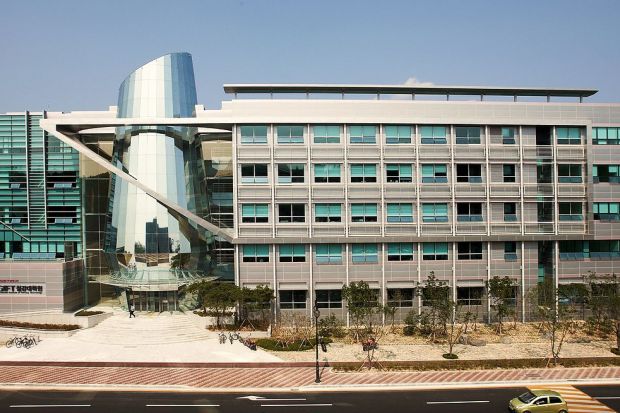POSTECH: Free Distribution of MAXIM, an Ultrahigh-speed Open-source Simulation Program for Metasurfaces
A POSTECH research team developed and freely distributed an optimized simulation program that enables designing metasurfaces, a material that can control light to hide appearances or encrypt information and transmit a stereoscopic video at the speed of light.
POSTECH’s research team led by Prof. Junsuk Rho of POSTECH’s departments of mechanical engineering and chemical engineering, and Dr. Gwanho Yoon (currently an assistant professor in the Department of Manufacturing Systems and Design Engineering at the Seoul National University of Science and Technology) has developed a simulation program optimized for metamaterials and distributed it online for free. It is a research achievement that overcomes the limitations of conventional commercial electromagnetic wave simulation software, which is expensive and has low computational accuracy. This research was introduced along with the software package in the online edition of Computer Physics Communications, a world-renowned journal in the field of mathematical physics and computer engineering.
A metamaterial is a novel material engineered of artificial atoms that mimic atoms existing in nature and can freely control various optical properties such as sound refraction and ultra-high refraction that conventional materials cannot provide. Because of these characteristics, research to implement new optical devices such as ultra-thin planar lenses, high-resolution holograms, and invisible cloaks using metamaterials is attracting worldwide attention.
In the case of metamaterials operating in visible light detectable to the human eye, they are manufactured through multilayers of periodically arranged structures (hereinafter referred to as nanostructures) with a size of several hundred nanometers less than one micrometer. In order to design such metamaterials, it is necessary to calculate the shape of individual nanostructures corresponding to the desired optical properties. But since the mathematical solution for this has not yet been found, metamaterial researchers design them using numerical-value analysis programs to obtain an approximate solution.
To date, a commercial electromagnetic wave simulation program based mainly on the finite-difference time-domain method (FDTD) has been used for metamaterial design. The FDTD is a general-purpose program that can be widely used not only for metamaterials but also for various electromagnetic-related simulations. However, when the FDTD-based program is used for metamaterial design, it takes a long time to calculate, the reliability of the result is low due to low computational accuracy, and requires a complex post-processing calculation. Also, because these programs are expensive commercial software (license costs), they are not easily accessible to researchers who lack financial means to use them.
To this, the research team developed MAXIM, an open-source electromagnetic simulation program optimized for metamaterial design through RCWA (rigorous coupled-wave analysis). RCWA is a calculation method that specializes in computing the optical properties of periodically arranged nanostructures. Because of its fast calculation speed and high accuracy, it can overcome the limitations of the conventional FDTD program (Lumerical). In addition, because MAXIM automatically calculates and provides the coefficients required for metamaterial design, it has the advantage of obtaining the required data without complex post-calculations.
The research team compared the optical properties of various metamaterials by calculating them with MAXIM and the commercial FDTD program. As a result, the difference in the computation results of the two programs for general metamaterials was within 1%, verifying the high reliability of MAXIM.
The research team distributed MAXIM online for free so that anyone can use it for metamaterials research. And since MAXIM can be run by double-clicking an icon like a typical program on Windows and has an intuitive GUI that allows the observation of the simulation environment at once, anyone can use it with ease.
Professor Rho remarked, “Even through MAXIM is an open-source software, it provides a GUI and computational accuracy equivalent to that of a commercial software, allowing it to be very accessible even to the average user without expertise in programming languages.”
“MAXIM is made with Python and distributed free of charge through the lesser general public license (LGPL), which allows researchers to use it without financial burden and has the potential to greatly contribute to the development of the metamaterial field,” remarked Professor Rho.
The currently developed and distributed MAXIM can be directly used for metamaterials research, and the research team will continue to diversify the boundary conditions that can be calculated in MAXIM and apply the latest algorithms such as AI-based optimizations and parallel calculations to develop it into a general-purpose electromagnetic simulation program.
This research was conducted with the support from the Mid-career Researcher Program, the Global Frontier Project, the Creative Materials Discovery Program, and the Regional Leading Research Center Program of the National Research Foundation of Korea funded by the Ministry of Science and ICT, and the Ministry of Education’s BK21 Four (Phase Four Brain Korea 21) Program.

